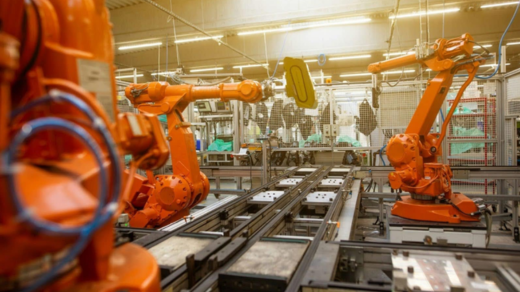5 Types of Manufacturing Processes You Should Know About

Manufacturing processes are the backbone of many industries, producing everything from car parts to household appliances. Understanding the different types of manufacturing methods is important for anyone interested in how things are made.
In this article, we will explore five common manufacturing processes. Each process plays a unique role in turning raw materials into useful products, and knowing how they work can help you appreciate the complexity of modern production.
1. Machining
Machining is one of the oldest and most widely used manufacturing processes. It involves using machines to remove material from a work piece to create a desired shape. Common machining methods include turning, milling, and drilling.
In these processes, tools like lathes, drills, and grinders are used to cut or grind materials such as metal, plastic, or wood. Machining is often used for parts that require high precision, such as engine components or mechanical gears.
2. Injection Molding
Injection molding is a manufacturing process used to create plastic parts. It involves melting plastic pellets and injecting them into a mold under high pressure. Once the plastic cools and solidifies, the mold is opened, and the finished part is removed.
This process is ideal for mass production of small to medium-sized parts, such as toys, containers, and automotive components. The advantage of injection molding is that it can produce complex shapes with a high level of detail and consistency.
3. Casting
Casting is a process in which a material, usually metal or plastic, is heated until it melts, and then poured into a mold to take the shape of the mold. After the material cools and hardens, the mold is removed, leaving the finished part.
Casting is commonly used for large parts, such as engine blocks, pipes, and machine components. There are various types of casting methods, including sand casting, die casting, and investment casting, each suitable for different materials and applications.
4. Sheet Metal Fabrication
Sheet metal fabrication is a manufacturing process that involves cutting, bending, and assembling flat metal sheets into parts or structures. This process is widely used in industries like construction, automotive, and electronics.
In sheet metal fabrication, machines like laser cutters, shears, and press brakes are used to cut and shape the metal sheets. The metal can be bent into various shapes, such as boxes, frames, or enclosures. This process is especially useful for making parts that are strong yet lightweight.
5. Shaft Machining
Shaft machining is a specialized process used to create shafts, which are essential components in many machines and vehicles. A shaft is a cylindrical piece of material that transmits power or motion between different parts of a machine.
In shaft machining, the shaft is often made from metals like steel and is shaped using processes such as turning, grinding, or milling. These shafts must meet very precise specifications to ensure they work correctly in machinery. The process often involves creating features like grooves, threads, or splines that allow the shaft to fit and function within the machine.
Conclusion
Each manufacturing process has its own strengths and is suited for different types of products. Whether you’re producing small plastic parts, large metal components, or precision shafts, choosing the right manufacturing method is crucial for success.
By understanding processes like machining, injection molding, casting, sheet metal fabrication, and shaft machining, you can gain a deeper appreciation for how products are made and how industries rely on these techniques to create everything we use in our daily lives.




